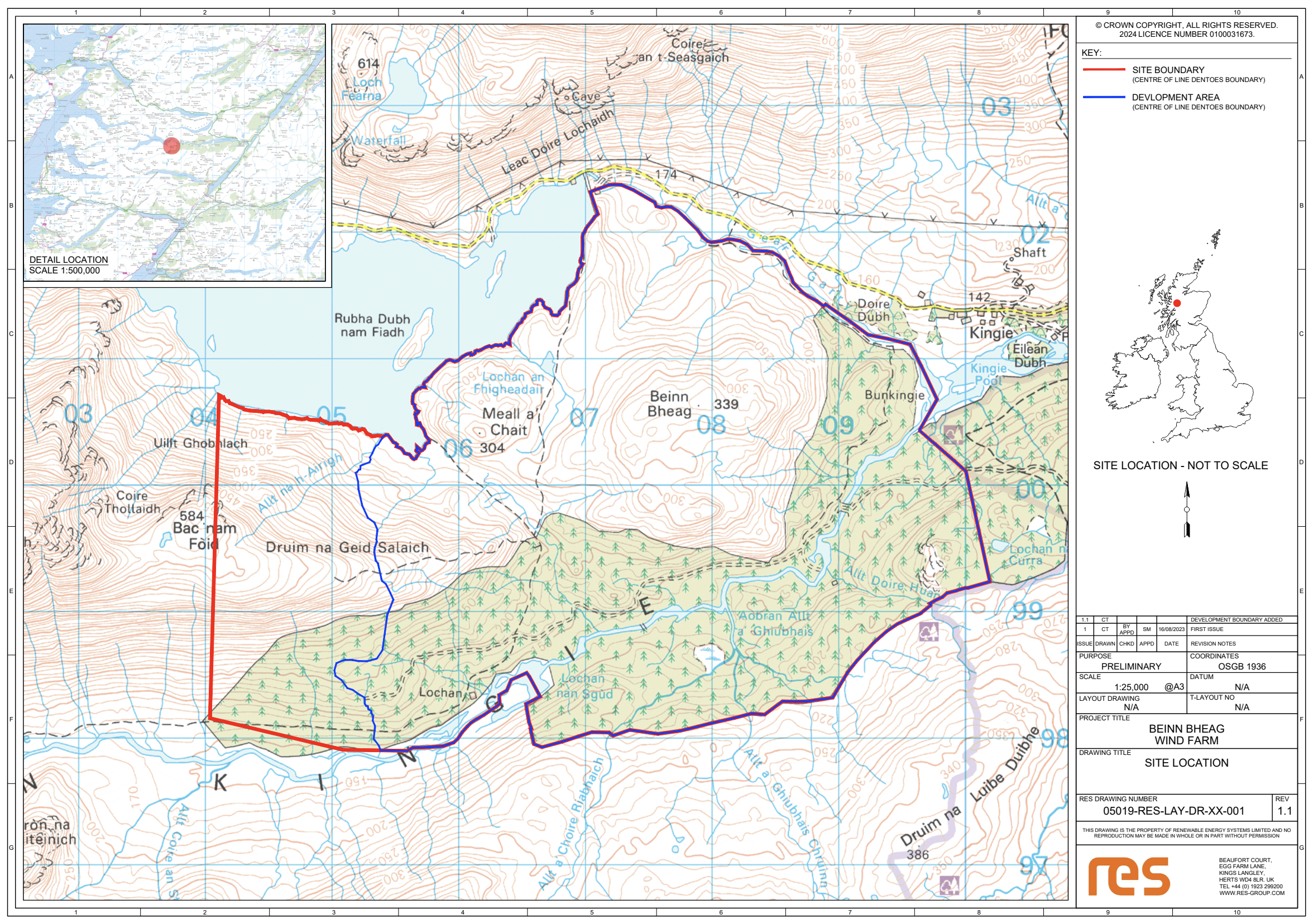About the Project
The proposed Beinn Bheag Wind Farm is located approximately 26km west of Invergarry in the Highlands.Based on our initial studies, the wind farm would comprise of up to 28 turbines up to tip height of 230m, resulting in an overall site generating capacity of 159.6MW. This is enough to power approximately 165,0001 homes with clean, low cost electricity every year.
Having undertaken initial site feasibility work we are now preparing for more detailed environmental and technical site survey work which will be carried out over the coming months to help inform the design.
In line with this, in August 2024, we submitted a Scoping Report to the Scottish Government’s Energy Consents Unit (ECU) which sets out and seeks feedback on the proposed scope of environmental assessment work. You can view or download a copy of the Scoping Report by clicking on the links below:
- Scoping Report
- Figure 2.1 Site Location
- Figure 2.2 Indicative Turbine Layout
- Figure 5.1 ZTV (45km) to 230m tip
- Figure 5.2 ZTV (25km) to 230m tip
- Figure 5.3 Landscape Character Types within the ZTV
- Figure 5.4 ZTV and Proposed Viewpoints
- Figure 5.5 Designated Landscape
- Figure 6.1 Heritage Assets
- Figure 7.1 Ancient Woodland and Peatland within 5km
- Figure 8.1 Ornithological Survey Areas
- Figure 8.2 Ornithological Designated Sites within 20km
- Figure 9.1 Slope Analysis
- Figure 9.2 Carbon and Peat Map
- Figure 9.3 Hydrology Constraints Map
In June 2024, we submitted a met mast application to The Highland Council. If consented, it will allow us to learn more about the wind speed and directions on site to help inform the design of the project. You can view or download a copy of the met mast documents by clicking on the links below:
- Meteorological Mast Application - Supporting Statement
- Met Mast Location Map
- Planning application Boundary Map
- Met Mast Drawing - Elevation of 70m Met Mast
- Outline Construction Access Plan
As part of the planning process, RES will undertake an Environmental Impact Assessment (EIA). The purpose of the EIA is to investigate and alleviate any potential effects of a development on the natural, physical and human environment. An EIA includes the following assessments:
- Landscape & Visual
- Archaeology & Cultural Heritage
- Ornithology
- Ecology
- Hydrology, Hydrogeology & Geology
- Traffic & transport
- Noise
- Socioeconomics
The results of these surveys will be included in the Environmental Impact Assessment Report which will form part of any planning application that is submitted.
1 The 164,888 homes equivalent figure has been calculated by taking the predicted annual electricity generation of the site (based on RES assessments Beinn Bheag has a predicted capacity factor of 38.2%) and RES’ predicted site generation capacity of 159.6MW) and dividing this by the annual average electricity figures from DESNZ showing that the annual GB average domestic household consumption is 3,239 kWh (January 2024). Final wind farm capacity will vary depending on the outcome of planning permission and the turbine type selected.

